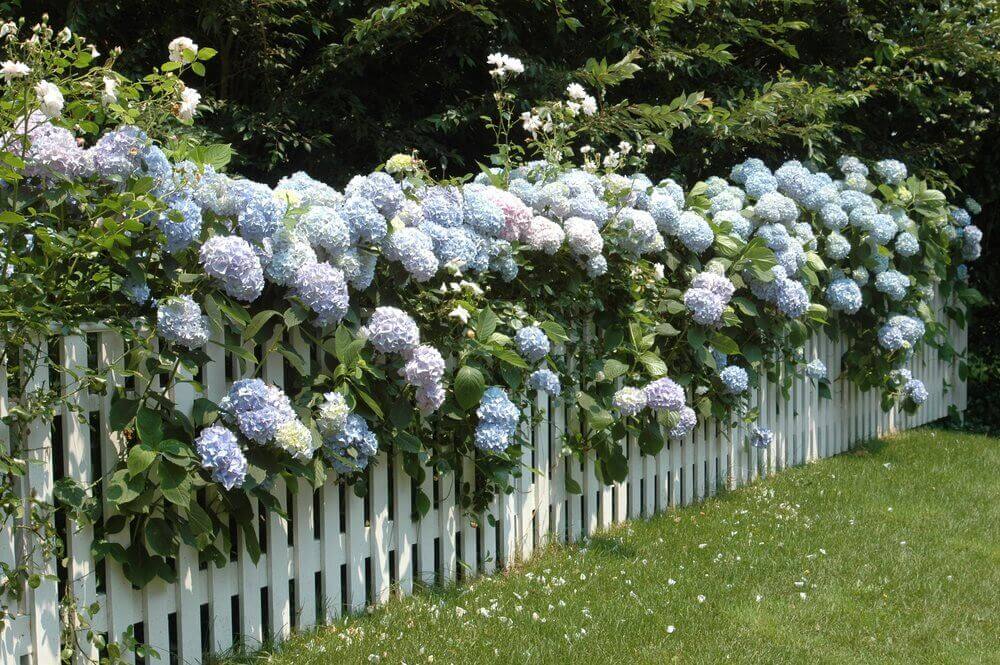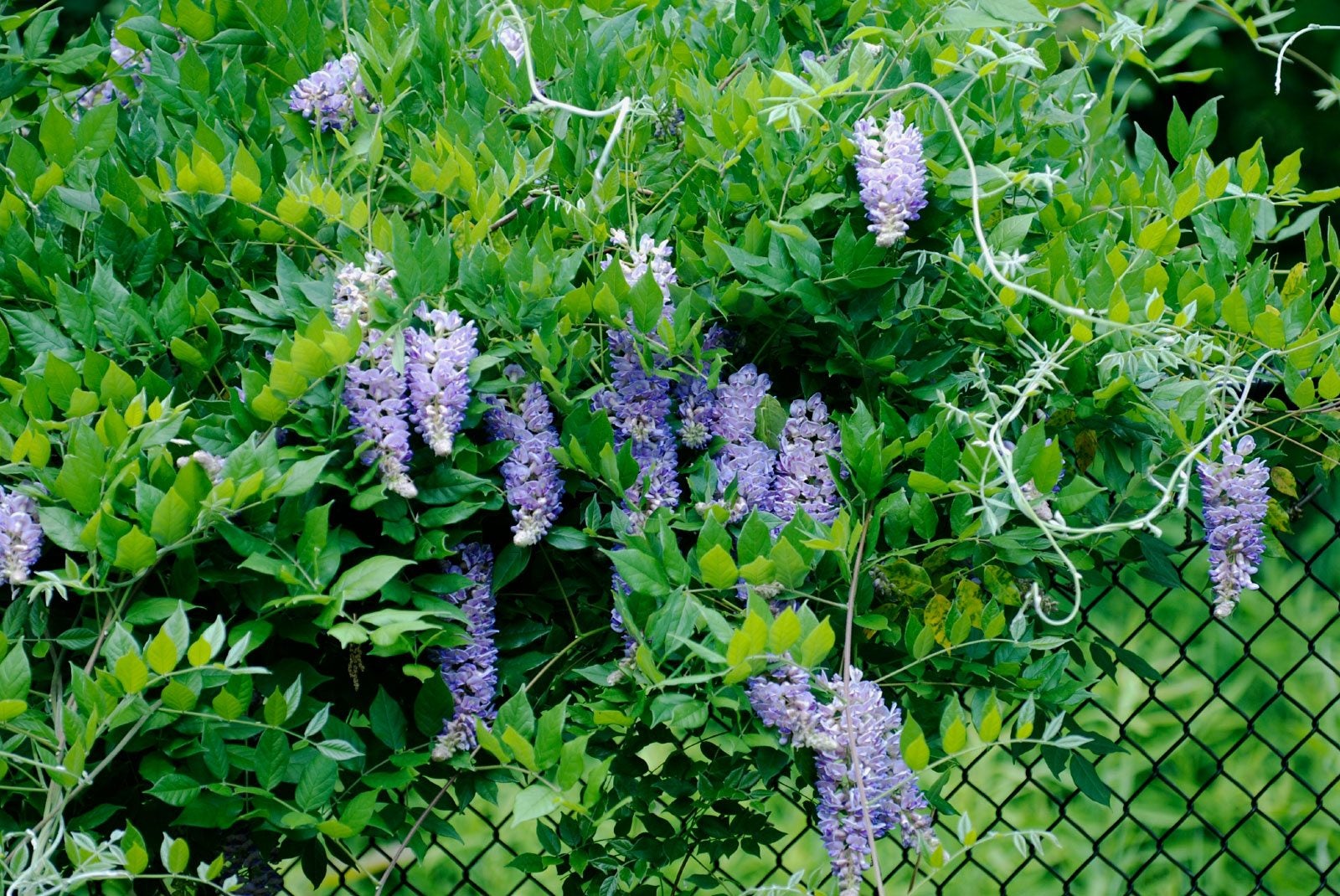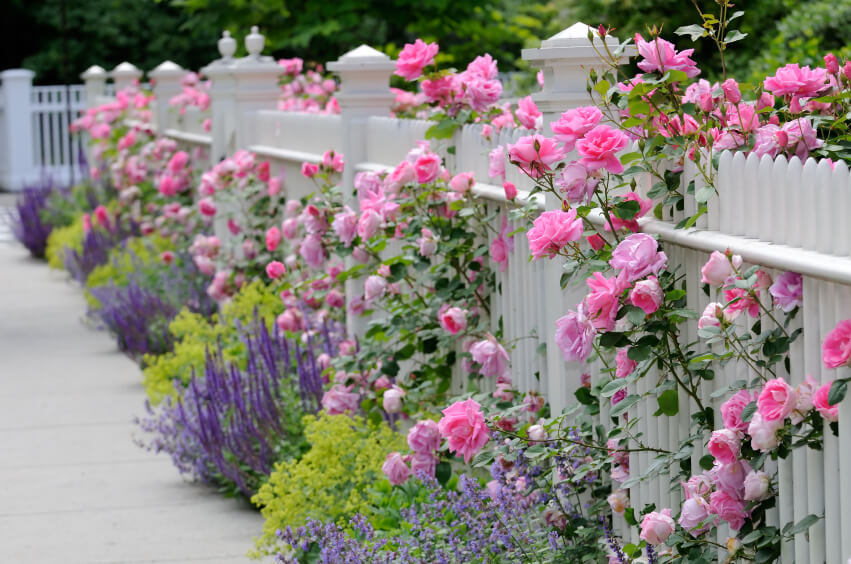Why Cover Your Fence with Plants?
Covering a fence with plants is a simple yet effective way to enhance the aesthetic appeal of your outdoor space. Not only does it add a touch of natural beauty, but it also provides numerous benefits for the environment and your quality of life. By covering a fence with plants, you can increase privacy, reduce noise pollution, and create a natural barrier that blocks out unwanted views. Additionally, a plant-covered fence can help to support local biodiversity by providing a habitat for birds, bees, and other wildlife.
One of the primary advantages of covering a fence with plants is the improved aesthetics it provides. A lush green screen can instantly elevate the look of your outdoor space, making it more inviting and relaxing. Moreover, a plant-covered fence can help to soften the appearance of a harsh or unsightly fence, creating a more natural and organic look. With a wide range of plants to choose from, you can select species that complement your existing landscape and architectural style.
In addition to its aesthetic benefits, covering a fence with plants can also have a positive impact on the environment. By providing a natural barrier, a plant-covered fence can help to reduce noise pollution and create a more peaceful outdoor space. Furthermore, a plant-covered fence can help to support local biodiversity by providing a habitat for wildlife and supporting the local ecosystem.
Overall, covering a fence with plants is a simple and effective way to enhance the aesthetic appeal of your outdoor space while also providing numerous benefits for the environment and your quality of life. Whether you’re looking to increase privacy, reduce noise pollution, or create a natural barrier, a plant-covered fence is an excellent solution. With its numerous benefits and versatility, it’s no wonder why covering a fence with plants has become a popular trend in outdoor design.
Choosing the Right Plants for Your Fence
When it comes to covering a fence with plants, selecting the right species is crucial for success. The type of plants you choose will depend on several factors, including the climate, soil type, and desired level of maintenance. For example, if you live in a hot and dry climate, you may want to choose drought-tolerant plants such as succulents or cacti. On the other hand, if you live in a cooler and more temperate climate, you may want to choose plants such as ivy or clematis that thrive in these conditions.
Another important consideration is the level of maintenance you are willing to commit to. Some plants, such as roses or hydrangeas, require regular pruning and fertilization to thrive. Others, such as boxwood or holly, are relatively low-maintenance and can thrive with minimal care. It’s also important to consider the mature size of the plants and how they will fit with the overall design of your fence.
Some popular plants for covering a fence include:
- Ivy: A versatile and low-maintenance option that can thrive in a variety of conditions.
- Clematis: A flowering vine that can add a pop of color to your fence.
- Succulents: A great option for hot and dry climates, succulents are low-maintenance and come in a variety of shapes and sizes.
- Boxwood: A classic choice for topiaries and hedges, boxwood is a low-maintenance option that can thrive in a variety of conditions.
Ultimately, the key to choosing the right plants for your fence is to consider your specific climate, soil type, and maintenance needs. By selecting plants that are well-suited to your conditions, you can create a beautiful and thriving plant-covered fence that enhances the aesthetic appeal of your outdoor space.
Preparing Your Fence for Planting
Before you can start covering your fence with plants, you need to prepare the fence itself. This involves cleaning the fence to remove any dirt, grime, or debris that may be accumulated on the surface. You can use a pressure washer or a garden hose with a spray nozzle to clean the fence. Make sure to remove any loose or damaged boards, and repair any gaps or holes in the fence.
Next, you need to ensure that the fence is structurally sound and can support the weight of the plants. Check for any signs of rot, decay, or damage, and make repairs as needed. You may also need to apply a trellis or other support system to the fence to provide a framework for the plants to grow.
Good drainage and soil quality are also essential for a healthy plant-covered fence. Make sure that the soil around the fence is well-draining and rich in organic matter. You can add compost or fertilizer to the soil to improve its quality. If the soil is heavy clay or sandy, you may need to amend it with organic matter to improve its structure.
Finally, consider the type of plants you want to use to cover your fence. Different plants have different requirements, so make sure to choose plants that are suitable for your climate, soil type, and level of maintenance. For example, if you want to use climbing plants like ivy or clematis, you will need to provide a trellis or other support system for them to grow.
By preparing your fence properly, you can create a beautiful and thriving plant-covered fence that enhances the aesthetic appeal of your outdoor space. Remember to choose the right plants for your fence, and provide the necessary support and care for them to grow and thrive.
How to Train Your Plants to Climb the Fence
Once you have selected the right plants for your fence and prepared the fence for planting, it’s time to train your plants to climb the fence. This can be a bit tricky, but with the right techniques and tools, you can create a beautiful and lush plant-covered fence.
One of the most important things to consider when training your plants to climb the fence is the type of support system you will use. You can use a trellis, arbor, or other support system to provide a framework for your plants to grow. Make sure to choose a support system that is sturdy and can hold the weight of your plants.
Next, you will need to prune your plants to encourage them to grow up the fence. Pruning involves cutting back the stems of your plants to promote new growth and encourage the plants to grow in a specific direction. You can use pruning shears or loppers to prune your plants, depending on the type of plant and the size of the stems.
Another technique you can use to train your plants to climb the fence is twining. Twining involves wrapping the stems of your plants around the support system to encourage them to grow up the fence. You can use twine or wire to tie the stems to the support system, making sure not to tie them too tightly.
Finally, you can use plant ties to secure your plants to the fence. Plant ties are small ties that you can use to tie the stems of your plants to the fence, making sure they don’t get damaged or broken. You can use plant ties in conjunction with pruning and twining to create a beautiful and lush plant-covered fence.
By following these tips and techniques, you can train your plants to climb the fence and create a beautiful and lush plant-covered fence. Remember to be patient and give your plants time to grow and thrive.
Design Ideas for a Beautiful and Functional Plant-Covered Fence
A plant-covered fence can be a beautiful and functional addition to any outdoor space. With a little creativity, you can turn your fence into a stunning vertical garden, a lush espalier, or a elegant topiary. Here are some design ideas to get you started:
Vertical Gardens: A vertical garden is a great way to add some greenery to a small outdoor space. You can use a trellis or a wall-mounted planter to create a vertical garden, and choose plants that are compact and easy to maintain. Some popular plants for vertical gardens include succulents, ivy, and creeping thyme.
Esperaliers: An espalier is a type of plant-covered fence that is trained to grow in a flat, two-dimensional plane. You can use a trellis or a espalier system to create an espalier, and choose plants that are compact and easy to train. Some popular plants for espaliers include roses, clematis, and fruit trees.
Topiaries: A topiary is a type of plant-covered fence that is trained to grow into a specific shape or design. You can use a trellis or a topiary system to create a topiary, and choose plants that are compact and easy to train. Some popular plants for topiaries include boxwood, holly, and yew.
Incorporating Other Elements: In addition to plants, you can also incorporate other elements into your plant-covered fence design. Some ideas include:
- Lighting: String lights or fairy lights can add a magical touch to your plant-covered fence.
- Seating: A bench or a chair can provide a comfortable place to sit and enjoy your plant-covered fence.
- Decorative Features: You can add decorative features such as planters, sculptures, or other ornaments to your plant-covered fence.
By incorporating these design ideas into your plant-covered fence, you can create a beautiful and functional outdoor space that you will enjoy for years to come.
Maintenance and Upkeep for a Thriving Plant-Covered Fence
A plant-covered fence requires regular maintenance and upkeep to ensure it remains healthy and thriving. Here are some tips to help you keep your plant-covered fence looking its best:
Watering: Make sure to water your plants regularly, but avoid overwatering, which can lead to root rot and other problems. Check the soil moisture by inserting your finger into the soil up to the first knuckle. If the soil feels dry, it’s time to water.
Fertilizing: Feed your plants with a balanced fertilizer during the growing season (spring and summer). Avoid fertilizing during the dormant season (fall and winter), as this can cause new growth that may not have time to harden off before the first frost.
Pruning: Prune your plants regularly to maintain shape and promote healthy growth. Remove any dead or damaged leaves or stems, and cut back overgrown branches to encourage new growth.
Pest and Disease Control: Keep an eye out for pests and diseases that can harm your plants, such as aphids, whiteflies, and powdery mildew. Use organic or chemical controls as needed to prevent infestations and infections.
Weed Control: Weeds can compete with your plants for water and nutrients, so make sure to remove them regularly. Use a weeding tool or your hands to pull out weeds, and consider using a mulch or landscape fabric to prevent new weeds from growing.
Seasonal Maintenance: Perform seasonal maintenance tasks to ensure your plant-covered fence remains healthy and thriving. In the spring, inspect your fence for any damage or wear and tear, and make repairs as needed. In the fall, clean up any debris or dead plant material, and apply a layer of mulch or compost to protect the soil over the winter.
By following these maintenance and upkeep tips, you can keep your plant-covered fence looking its best and ensure it remains a beautiful and functional part of your outdoor space.
Using a Trellis or Arbor to Enhance Your Plant-Covered Fence
A trellis or arbor can be a great addition to a plant-covered fence, providing support for climbing plants and adding visual interest to the fence. Here are some benefits of using a trellis or arbor to enhance your plant-covered fence:
Support for Climbing Plants: A trellis or arbor provides a structure for climbing plants to grow up, allowing them to reach their full potential and cover the fence more evenly.
Visual Interest: A trellis or arbor can add visual interest to the fence, creating a beautiful and unique feature that sets your outdoor space apart.
Increased Biodiversity: By providing a structure for climbing plants to grow up, a trellis or arbor can increase biodiversity in your outdoor space, attracting birds, bees, and other wildlife.
Types of Trellises and Arbors: There are many different types of trellises and arbors available, including wooden, metal, and living structures. Wooden trellises and arbors are a popular choice, as they can be stained or painted to match the color of the fence. Metal trellises and arbors are also a good option, as they are durable and can be shaped to fit the design of the fence. Living structures, such as a living wall or a green roof, can also be used to create a unique and beautiful plant-covered fence.
Examples of Trellises and Arbors: Here are a few examples of trellises and arbors that can be used to enhance a plant-covered fence:
- Wooden trellis: A wooden trellis can be stained or painted to match the color of the fence, and can be shaped to fit the design of the fence.
- Metal arbor: A metal arbor can be shaped to fit the design of the fence, and can be used to support climbing plants.
- Living wall: A living wall can be used to create a unique and beautiful plant-covered fence, and can be designed to fit the shape and size of the fence.
By using a trellis or arbor to enhance your plant-covered fence, you can create a beautiful and unique outdoor space that is perfect for relaxing and enjoying nature.
Creating a Unique and Beautiful Plant-Covered Fence on a Budget
Creating a plant-covered fence can be a cost-effective way to enhance the beauty and functionality of your outdoor space. Here are some tips and ideas for creating a beautiful plant-covered fence on a budget:
Use Recycled Materials: Consider using recycled materials, such as old pallets or wooden crates, to create a unique and eco-friendly plant-covered fence.
Shop for Plants During Sales: Keep an eye out for plant sales at your local nursery or gardening store, and stock up on plants at discounted prices.
DIY Projects: Consider taking on DIY projects, such as building your own trellis or arbor, to save money and add a personal touch to your plant-covered fence.
Use Affordable Plants: Choose plants that are affordable and easy to maintain, such as succulents or ivy, to create a beautiful and low-maintenance plant-covered fence.
Get Creative with Design: Don’t be afraid to think outside the box and get creative with your plant-covered fence design. Consider using a combination of plants, trellises, and other elements to create a unique and beautiful fence.
Use Lighting to Enhance the Look: Consider using solar-powered lights or string lights to enhance the look of your plant-covered fence and create a warm and inviting ambiance.
Make it a Family Project: Consider making your plant-covered fence a family project, and involve your kids or other family members in the design and construction process.
Use Local and Sustainable Materials: Consider using local and sustainable materials, such as reclaimed wood or bamboo, to create a plant-covered fence that is not only beautiful but also eco-friendly.
By following these tips and ideas, you can create a unique and beautiful plant-covered fence on a budget that will enhance the beauty and functionality of your outdoor space.







